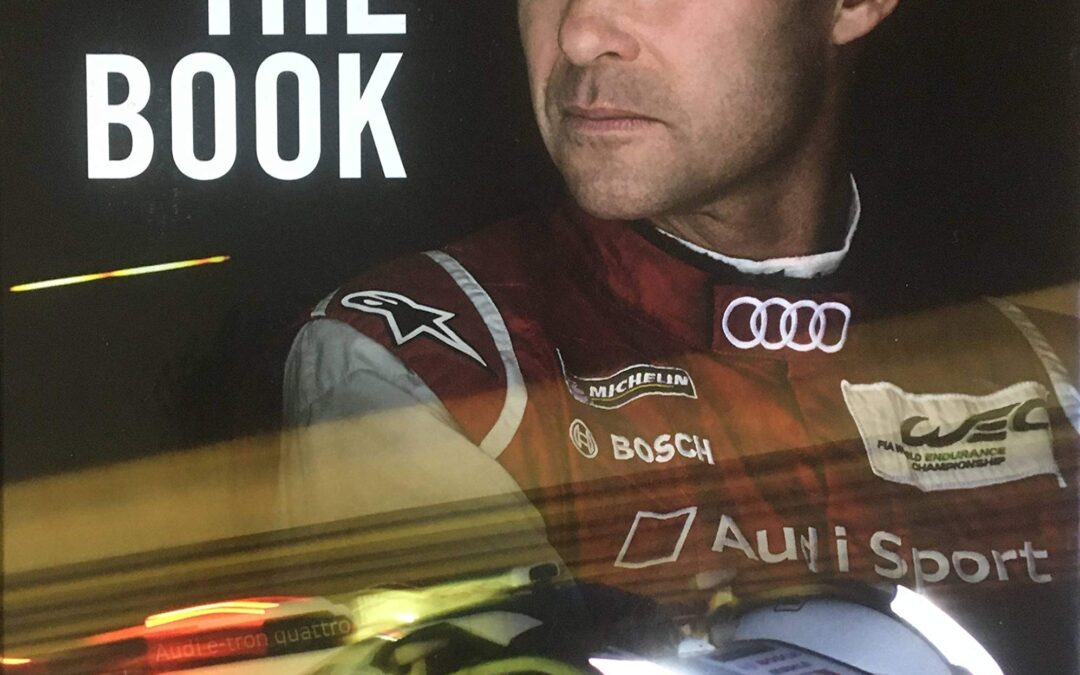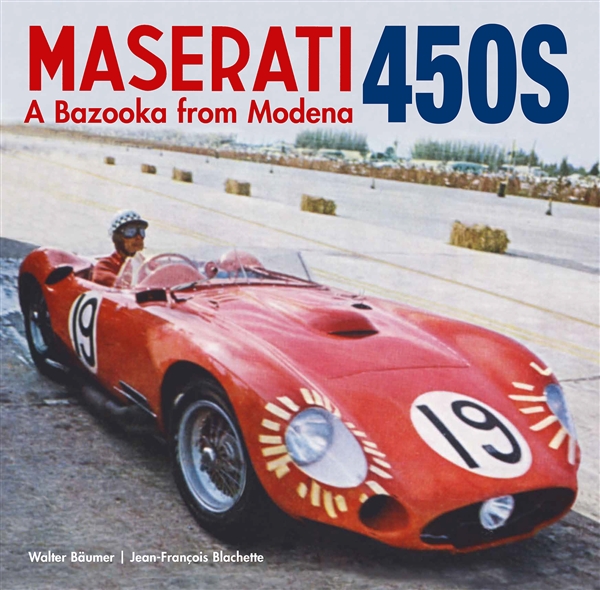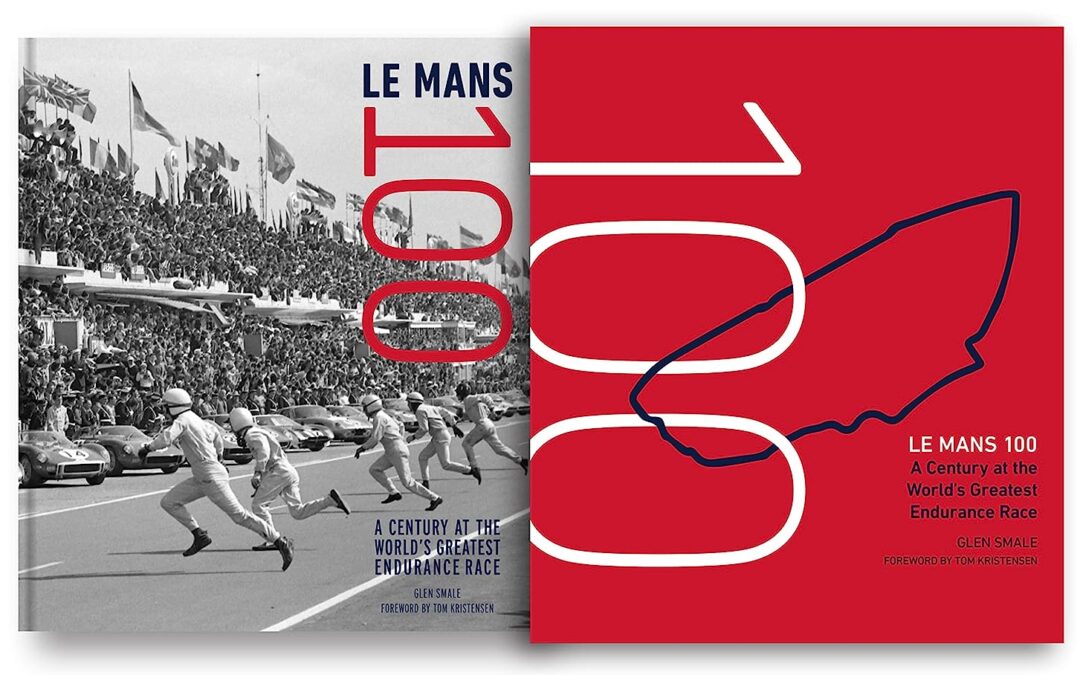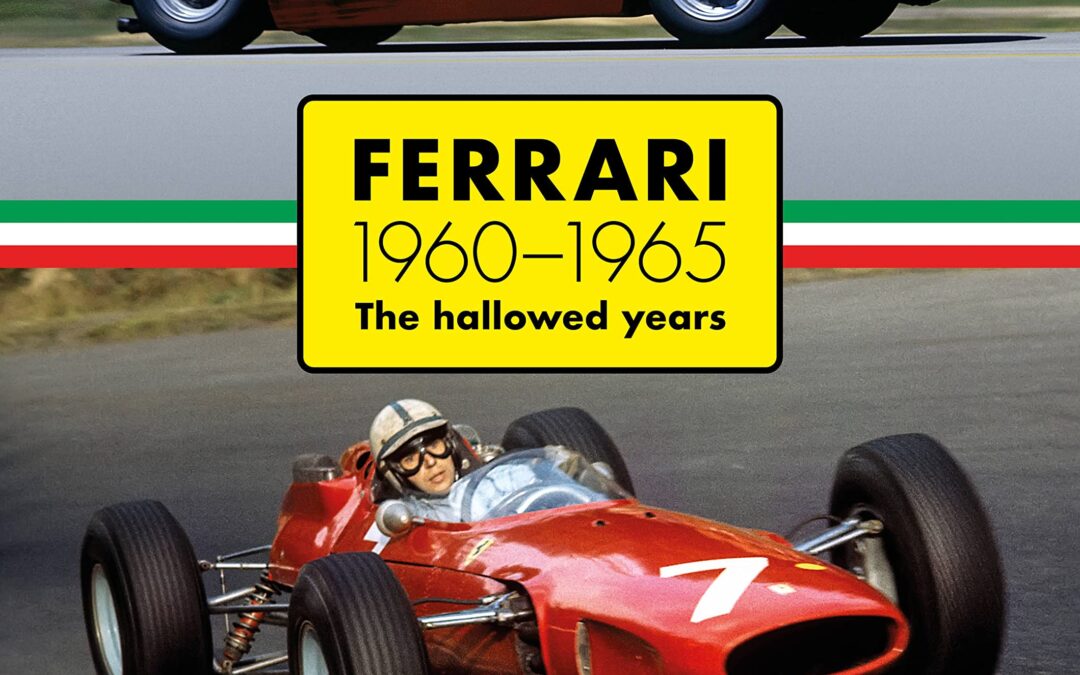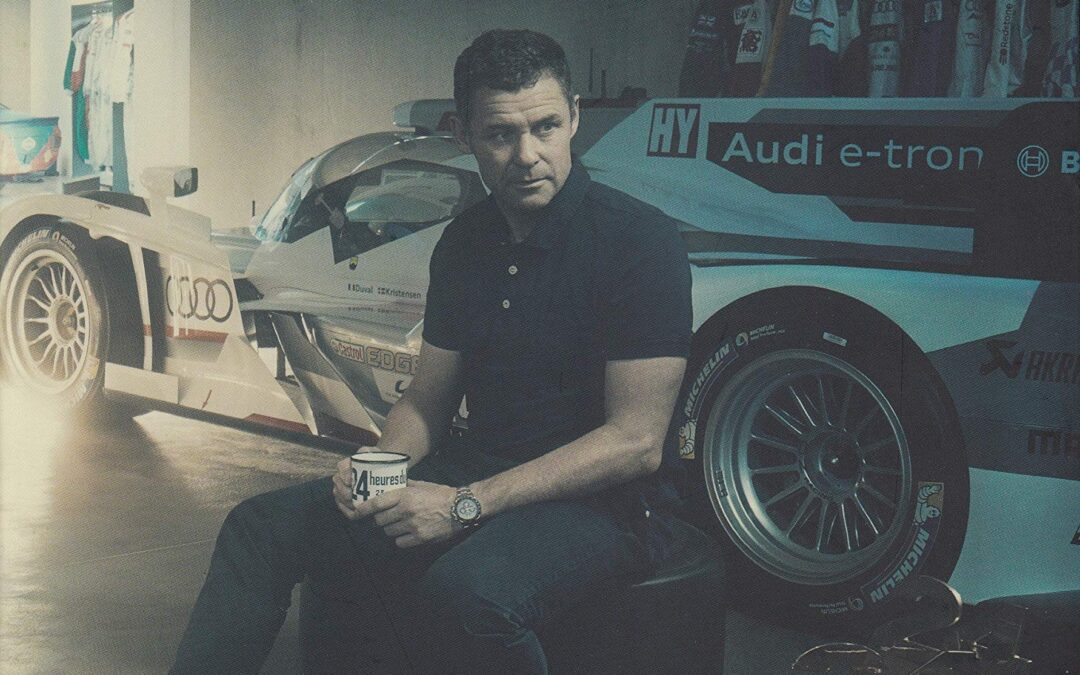
Between 1997 and 2014, Tom Kristensen won the world’s toughest motor race, the Le Mans 24 Hours, a record nine times and finished on the podium on five more occasions. Every time his car made it to the finish, in fact, he was in the top three. It is no wonder that this great sports car driver is known as ‘Mr Le Mans’ to motorsport fans around the world.
Now retired from racing, Kristensen shares in this book his deepest personal reflections and insights from inside and outside the cockpit. He looks back on more than 30 years spent striving for perfection in racing and tells of the battles and setbacks that sometimes seemed impossible to overcome, including a terrible accident in 2007.
- Climbing the racing ladder, from karting into Formula 3 single-seaters, including championship titles in Germany (1991) and Japan (1993), then Formula 3000 and a Formula 1 testing role with Tyrrell.
- Winning as an underdog on his first visit to Le Mans, in 1997 driving an elderly Joest-run privateer Porsche in which he impressed all onlookers with a night-time charge to vanquish Porsche’s factory-entered favourite.
- His second Le Mans victory came in 2000 on his maiden drive for Audi in the R8, a car that was to become all-conquering.
- Kristensen won the next five editions of Le Mans, four times with Audi and once with Bentley (in 2003), his last victory in this sequence taking him past Jacky Ickx’s previous record at the Circuit de la Sarthe.
- His eighth win came in one of the all-time classic contests at Le Mans, in 2008, a rollercoaster of a race in which his ageing diesel-powered Audi was never expected to beat the fancied works Peugeots.
- One more victory with Audi in 2013 sealed his reputation as a true legend of Le Mans.
- His story includes exploits at other racetracks all over the world, none more prolific than Sebring, home of America’s long-established classic endurance race that Kristensen won six times.
- Personal reflections together with contributions from notable observers — including English journalists Gary Watkins and Charles Bradley — complete a truly rounded portrait of the man and his achievements.
Voted ‘Sports Book of the Year’ when originally published in Kristensen’s native Denmark, this thoughtful memoir is now available in English.

After months of preparation, practice and planning, the season’s race championship can rely on just one fastener doing its job. If that fastener shears or loosens, the whole race can be lost—not to mention valuable machinery and perhaps even lives.”
“Failure does not have to happen. If the persons responsible for the design, installation and maintenance of the equipment had done their job properly, it could have not happened. If the persons responsible for maintenance had read—and understood—this book, it probably would not have.”
—Carroll (Preface)
Stencil 201 Ed Roth

Trophies and Scars is the profoundly personal, sincere, and remarkably revealing story of the life and times of NASCAR Hall of Famer Ray Evernham. A son of the Jersey Shore, Evernham dedicated his life to fulfilling his boyhood dream of becoming a professional race car driver.
By age eighteen, he was banging fenders with good success on the Northeast short track circuit. When his dreams of becoming an Indy car sensation literally crashed and burned, he turned to Roger Penske’s International Race of Champions (IROC), before another brutal crash forced him to give up his Indy dream for good.
It was time to change careers.
As a leader of a race team on the technical rather than the driving side, he discovered new skills critical to building successful racing organizations. A brief, ill-fated, and downright volatile stint on Alan Kulwicki’s crew, turned into a “right place at the right time” scenario, sparking a seminal partnership with racing phenom Jeff Gordon. They would prove to be one of the most potent racing duos in history.
Evernham shares previously untold tales of how the duo led the No. 24 team to three championships in four seasons (1995, 1997, 1998) and a series-leading forty-seven wins, revealing in candid detail how and why their storied relationship came to an end.
The book also details Evernham’s time spearheading the return of Dodge to NASCAR, building Evernham Motorsports into one of the most successful NASCAR teams, as well as his transformation into a TV personality with roles as a NASCAR analyst for SPEED, ESPN, ABC, FOX, and NBC and as host to his own TV series, AmeriCarna, on the Velocity channel.
Woven throughout all these stories recounting the many twists and turns of his life, he reveals how he buried himself in work to cope with his personal challenges, such as his son Ray J.’s battle with leukemia and later autism diagnosis. Many of these painful challenges ultimately brought rich rewards, such as the formation of the Evernham Family Racing for a Reason Foundation, funding for IGNITE, education and training programs for young adults with high-functioning autism or Asperger’s syndrome, his loving marriage to Erin, and the birth of their daughter Caite.
You needn’t be a racing fan to appreciate Evernham’s inspiring journey of tireless persistence, radical determination, steadfast leadership, and fearless reinvention. For as he believes, a life lived to the fullest is packed with trophies–and scars.
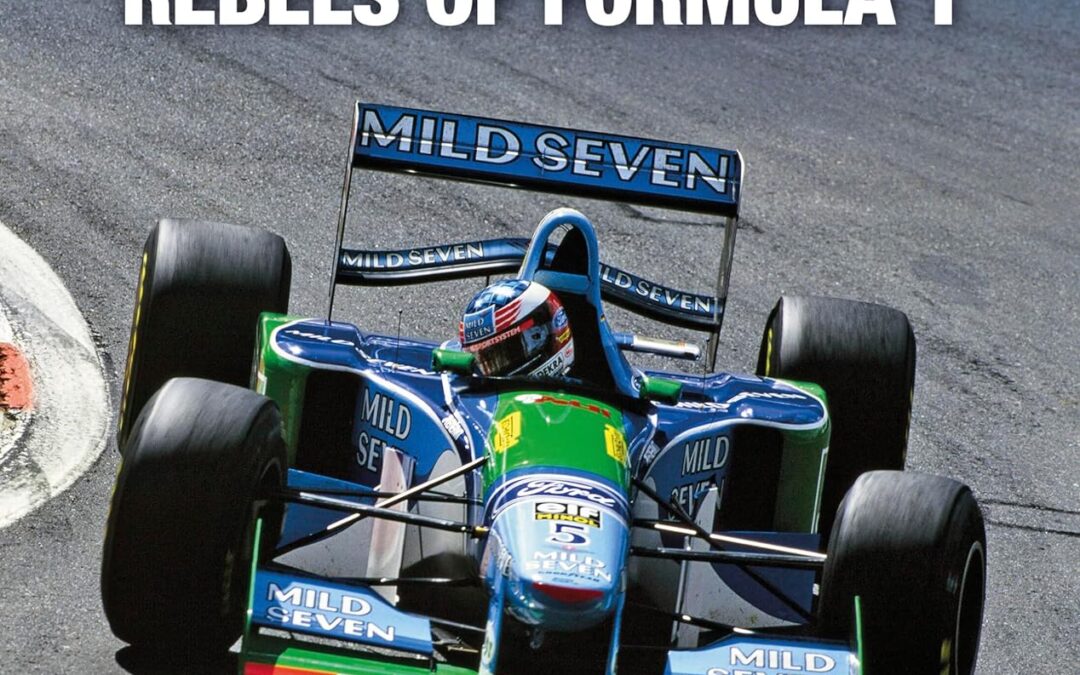
Unconventional, flamboyant, ground-breaking, colourful, controversial — the Benetton Formula 1 team was all of those things.
Defying perceptions as the rebels of Formula 1, Benetton achieved great success, particularly in the two glorious seasons of 1994 and 1995 when the team swept aside the big names — Williams, McLaren and Ferrari — to claim back-to-back World Championship titles for up-and-coming Michael Schumacher. This book tells the entire 1986–2001 history of the Benetton team for the first time with insightful contributions from many of the key participants, including Flavio Briatore, Alessandro Benetton, Pat Symonds and Rory Byrne.
- Beginnings: after three seasons in F1 as a sponsor, Benetton purchases ailing Toleman and creates its own BMW-powered team for 1986, taking a first win that year with Gerhard Berger.
- Growing in stature: with Flavio Briatore arriving to run the team and using Ford engines, Benetton edges towards consistently strong performances, including two consecutive wins for Nelson Piquet at the end of 1990.
- The key driver: the inspired signing of Michael Schumacher takes Benetton closer to glory during a 1992–93 high-tech period that sees the Williams team reign supreme.
- The breakthrough year: Following tragedy, black flags, disqualifications, a pitlane inferno and political maneuvring, the tumultuous 1994 season ends with Schumacher sealing the World Championship title for Benetton after a controversial clash with rival Damon Hill.
- The best year: Transferring to Renault engines, Benetton dominates in 1995, Schumacher taking a second consecutive crown thanks to nine wins and Johnny Herbert supporting to help deliver the constructors’ title too.
- The hangover: After Schumacher’s departure to Ferrari and the loss of factory Renault engines, Benetton struggles to maintain its status in 1996–97 with Gerhard

Ready for a trip to the “end of the world”? Patagonia stands for infinite and awe-inspiring landscapes, glistening glaciers and majestic peaks. Exclusively for the CURVES magazine, photographer Stefan Bogner explored the most beautiful scenic roads of this unique area.
Marvellous aerial views show exciting routes right in the middle of nowhere. No matter whether you’re driving casually through the wild steppe in your caravan or prefer the thrills of winding roads with breathtaking views: The extraordinary nature experience makes your trip most certainly an unforgettable journey.
– Patagonia: Pictures of an overwhelming landscape you have never seen like this before
– The loveliest routes and loneliest mountain roads: with maps for route planning
– Unique driving experience on endless roads: for tours by car, motorbike, and caravaning
– Exquisite recommendations: Patagonia‘s best hotels and sights
– CURVES – the passion for lovely curves: an exceptional mix of travelogue and illustrated book
Delightful driving on the world’s most beautiful roads: Patagonia for individualists. Mountain passes with a view, matchless mountain panoramas and vast untouched plateaus: the characteristic landscape at the south end of Chile and Argentina is full of highlights. “Soulful Driving” is Stefan Bogners‘ motto for leisurely road trips, where you set the pace. To top this off, he recommends comfortable accommodation, fine restaurants and sights worth seeing.
Enjoy the airflow and find out where armadillos and guanacos bid good night: With CURVES Patagonia you will explore and fall in love with scenic roads and find the best tips for tours on two or four wheels.

This first comprehensive history of the Kennedy Space Center, NASA’s famous launch facility located at Cape Canaveral, Florida, reveals the vital but largely unknown work that takes place before the rocket is lit. Though the famous Vehicle Assembly Building and launch pads dominate the flat Florida landscape at Cape Canaveral and attract 1.5 million people each year to its visitor complex, few members of the public are privy to what goes on there beyond the final outcome of the flaring rocket as it lifts into space. With unprecedented access to a wide variety of sources, including the KSC archives, other NASA centers, the National Archives, and individual and group interviews and collections, Lipartito and Butler explore how the methods and technology for preparing, testing, and launching spacecraft have evolved over the last 45 years. Their story includes the Mercury and Gemini missions, the Apollo lunar program, the Space Shuttle, scientific missions and robotic spacecraft, and the International Space Station, as well as the tragic accidents of Challenger and Columbia. Throughout, the authors reveal the unique culture of the people who work at KSC and make Kennedy distinct from other parts of NASA.
As Lipartito and Butler show, big NASA projects, notably the Space Shuttle and the International Space Station, had much to learn on the ground before they made it to space. Long before a spacecraft started its ascent, crucial work had been done, work that combined the muscular and mundane with the high tech and applied the vital skills and knowledge of the men and women of KSC to the design of vehicles and missions. The authors challenge notions that successful innovation was simply the result of good design alone and argue that, with large technical systems, real world experience actually made the difference between bold projects that failed and innovations that stayed within budget and produced consistent results. The authors pay particular attention to “operational knowledge” developed by KSC–the insights that came from using and operating complex technology. This work makes it abundantly clear that the processes performed by ground operations are absolutely vital to success.
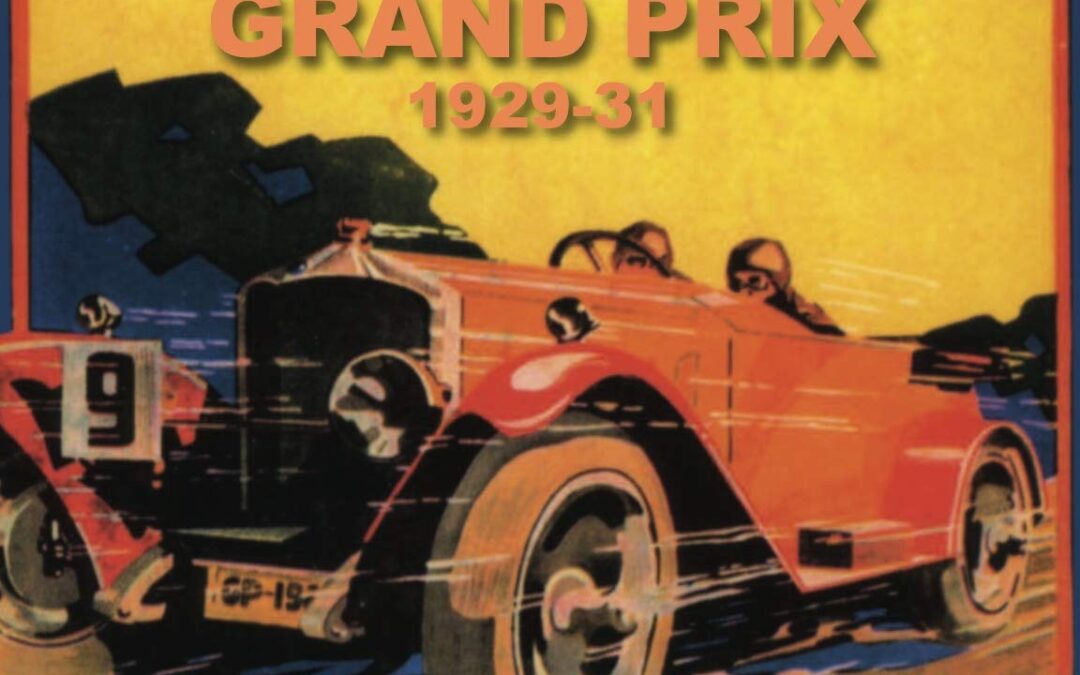
The Irish International Grand Prix 1929-1931, is a truly remarkable exploration of the earliest efforts by the newly-founded Irish Free State to gain recognition as a progressive independent modern country by its international peers.
Bob Montgomery, is the Curator of the Royal Irish Automobile Club (RIAC) Archive, said: “If I think about it, I have been researching and preparing to write this book for a period of some 20 years. I began to note the stories from people who were there and to gather photographs from the event during that time. Some of the stories and many images that can be found in this book have not been seen or heard about since the races took place in the late 1920s and early 1930s.
The book will, I hope do justice to the history of the Phoenix Park and how it’s very existence was so important to the emergence of motorsport in the early part of the last century, which culminated in the three Grand Prix. It’s a book designed to appeal to anyone with an interest in Irish history and not just the motorsport enthusiasts.

The Audi R8 was the first in a line of world-beating sports-prototype cars from the Ingolstadt marque which would dominate Le Mans, and would see Audi remain at the forefront of international sports-car racing for over 15 years.
If such an award could go to a machine, Audi ‘R8-405’ – the car featuring in this book – was surely the ‘Man of the Match’ for the 2000 Le Mans 24 Hours. In the end it would finish second, behind one of its team mates which had a far less-troubled run, but it was not for want of trying by Allan McNish, his co-drivers Stéphane Ortelli and Laurent Aïello and their mechanics.
The Audi R8s would go on to dominate endurance racing for a further five years. The cars had already shown what they were capable of by finishing first and second on their debut, in the 12 Hours of Sebring in March 2000.
At Le Mans, apart from a brief aberration when a Panoz led under a full course yellow, ‘R8-405’ led the race for six hours. Trouble then intervened, but the car’s drivers never gave up, McNish setting fastest lap of the race in the morning still chasing his team mates Frank Biela, Tom Kristensen and Emanuele Pirro in the eventual winning sister car. That car would soon be on its way to Audi’s museum, but ‘R8-405’ would race on in the American Le Mans Series (ALMS), driven later that year by Biela and Pirro and winning at Texas Motor Speedway and Las Vegas.
By the end of the season, ‘405’ and the other 4-series 2000-season R8s would be rendered almost obsolete by Audi’s introduction of a direct-injection engine for its new 5-series R8. That did not stop ‘405’ from competing for a further year in the ALMS, albeit in private – Champion Racing – hands, with regular drivers including Andy Wallace and Johnny Herbert. Despite its tender years, it would later go on to qualify as an historic car, and a host of new opportunities opened up as it became one of the most raced of all the R8s.
In 2020 the car was acquired by enthusiast Martin Halusa with every intention of taking it back to Le Mans in the future for the biannual Classic races.
The enthralling story of ‘R8-405’ is told in fascinating detail in this book, supported by a stunning array of photographs showing the car in action in its two years of ‘period’ competition, together with a gallery of fine studio images showing this ‘Great Car’ as it is today.
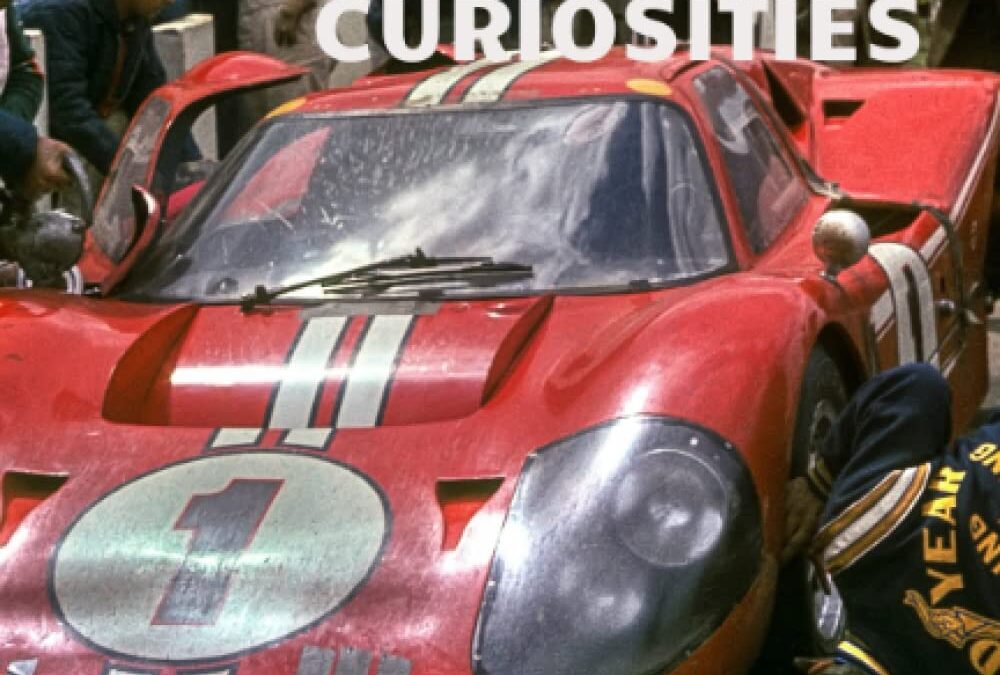
Thousands of pieces of curious information on drivers, constructors, layout, statistics, categories, milestones, nationalities, regulations, are provided in this fun book, set in chronological order from the initial race, in 1923, until the present time. The book is illustrated with photographs of some of the most representative cars that raced in the event. It is written in easy to read English, so it can be understood even by people who are not fluent English speakers. All the players, and many obscure drivers and constructors are featured: Ferrari, Jaguar, Bentley, Toyota, Audi, Matra-Simca, Porsche, Ford, Aston Martin, Peugeot, Alfa Romeo, Bugatti, Chenard et Walcker, Lorraine Dietrich, Mazda, Mercedes Benz, BMW, Rondeau, Gordini, Jacky Ickx, Tom Kristensen, Phil Hill, Woolf Barnato, Derek Bell, Bob Wollek, Yannick Dalmas, Frank Biela, Sebastien Buemi, Brice McLaren, Chris Amon, A.J. Foyt, Dan Gurney, Olivier Gendebien, Emanuele Pirro, Luigi Chinetti, Raymond Sommer, Tazio Nuvolari, Jean-Pierre Wimile, Hans Stuck, Hurley Haywood, Andre Lotterer, Gerard Larrousse, Graham Hill, Maurice Trintignant, Mike Hawthorn, Stirling Moss, etc.
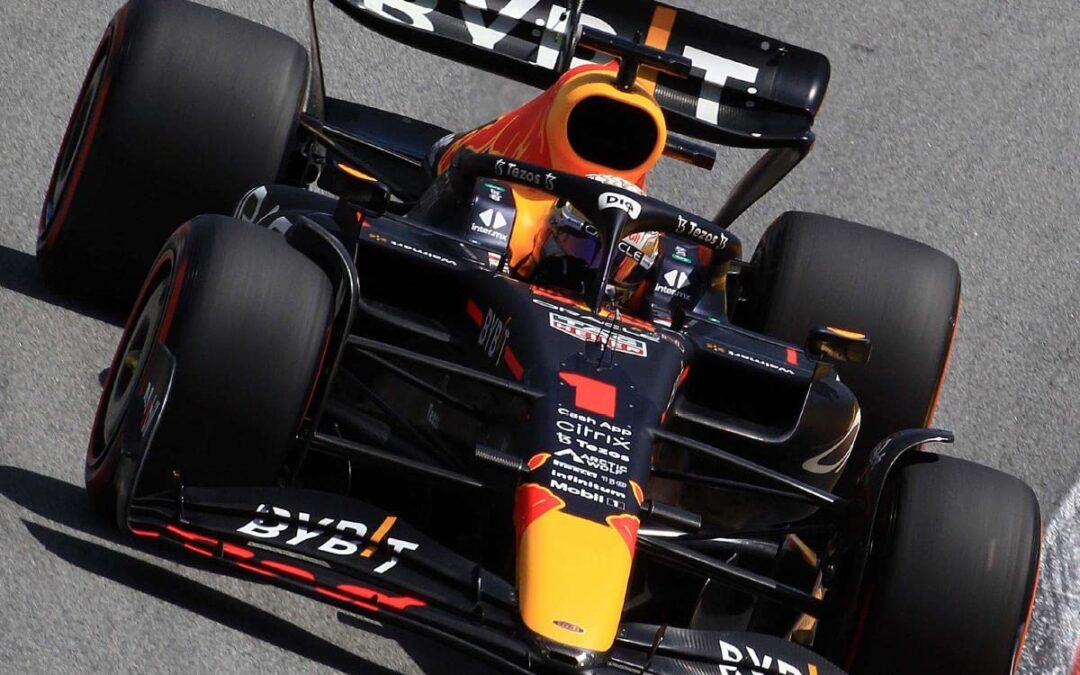
72nd YEAR OF PUBLICATION
Another record-breaking 22 Grand Prix season saw Red Bull Racing and Ferrari go head-to-head with some spectacular races and epic drives from all four drivers, each one winning one or more races. Mercedes with Lewis Hamilton and new recruit George Russell struggled for most of the season with aero and relentless porpoising until mid-way through the season when their performances improved and some notable qualifying and race results appeared, but far too late to challenge for the top spot.
There were some flashes of brilliance from the midpack consisting of Alpine, McLaren, Alpha Tauri, and Alfa Romeo, but Aston Martin, Haas, and Williams continued their struggle for consistency.
Authors Tony Dodgins and Maurice Hamilton, combining 80 years of F1 expertise, examine each round in depth. Full race reports are backed by detailed results, including lap charts and tire strategies.
The nuances of F1’s designs and development are analyzed team by team by the much-respected Mark Hughes, enhanced by Adrian Dean’s handsome F1 car illustrations.
Motor racing’s other major categories are also fully covered: Toyota’s WEC and Le Mans sports car successes; the closely fought Formula 2 and Formula 3 championships, featuring emerging young talent from around all continents of the world; and the tightly fought Formula E series for electric powered single seaters.
AUTOCOURSE includes all the hectic action from the top Touring Car series – the World Touring Car Cup and the British Touring Car Championships as well as the DTM Series running GT cars from Audi, Mercedes, BMW and Ferrari.
From America, Gordon Kirby recounts a thrilling Indycar series, featuring a mix of youthful talent such as Alex Palou and Pato O’Ward, both of whom vying to overturn the established veterans who have dominated proceedings over the past decade. The ever-popular NASCAR stock car series ran from February to November with barely a weekend’s break, to feature more than forty races before the final championship play-off round at Phoenix, Arizona.
In a single essential volume, AUTOCOURSE provides the most comprehensive record of world motor sport, complete with full results not found anywhere in a single volume.
It is required reading for all motor sport fans worldwide.
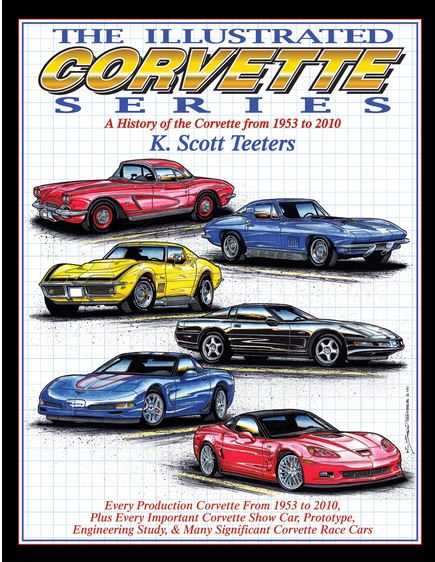
The Chevrolet Corvette began its storied existence in 1953 as an almost haphazard attempt at building an American sports car to rival the European offerings of the time. Since then, its history has ebbed and flowed with the times, with stunning peaks and valleys of design, horsepower, and quality. It has grown to be an American icon, representing the capability of domestic engineering on the streets and racetracks of the world.
The entire history of the car is represented on the pages of The Illustrated Corvette in artful style. Author/artist Scott Teeters delivers well-researched facts and figures on all of the production Corvettes to date, and many of the remarkable racing cars, special editions, concept cars, and tuner variants crafted over the years. Additionally, the author offers his passionate review of a potential new Corvette design.
Anyone who has ever admired a Corvette (either from afar or from the enviable position behind the wheel) will appreciate and enjoy The Illustrated Corvette. The thoughtful opinions and facts presented, teamed with the incredibly detailed artwork, makes this book a truly unique offering.
The photos in this edition are black & white

The material appeal of the automobile junkyard goes beyond the search for second-hand parts.
What happens to automobiles after they are retired but before they are processed as scrap? In this fascinating history, David N. Lucsko takes readers on a tour of salvage yards and wrecked or otherwise out-of-service cars in the United States from the point of view of gearheads―the hot rodders, restoration hobbyists, street rodders, and classic car devotees who reuse, repurpose, and restore junked cars.
Junkyards, Gearheads, and Rust is a nuanced exploration of the business of dismantling wrecks and selling second-hand parts. It examines the reinterpretation of these cars and parts by artists as well as their restoration by enthusiasts. It also surveys the origin and evolution of gearhead-oriented yards that specialize in specific types of automobiles; dissects the material and emotional appeal of the salvage yard and its contents among enthusiasts; and examines how zoning and nuisance ordinances have affected both salvage businesses and hobbyists.
Lucsko concludes with an analysis of efforts during the last twenty-five years to hasten vehicular obsolescence at the expense of salvage yards, mechanics, and enthusiasts. By examining how cars are salvaged, repurposed, and restored, this book demonstrates that the history of the automobile is much more than a running catalog of showroom novelties.

Cats were seen as omens in ancient times but eventually became trusted animal companions to those who sailed the seas. From catching rats at docks and on ships at sea, cats often became mascots to the navies around the globe. Filled with informative text and more than eighty photos, Cats in the Navy provides a fun history of our feline friends who rode the waves with us.
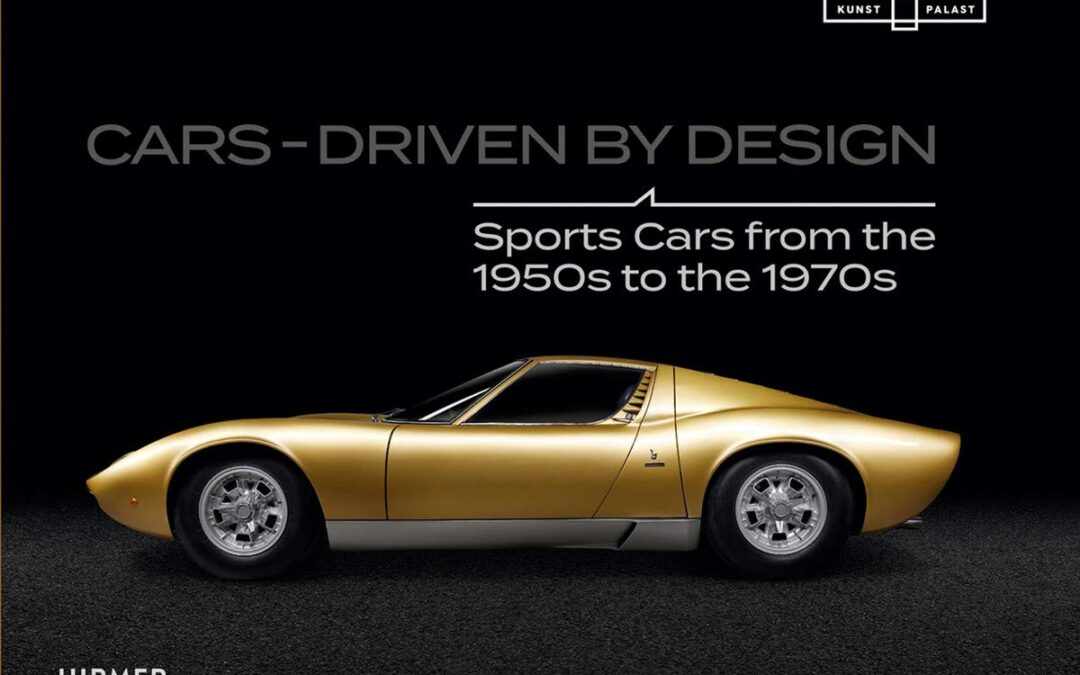
As a design object beyond its practical purpose, the automobile has left an indelible mark on the world we live in. There is scarcely another everyday item which has been designed in a more sophisticated and inventive manner and which offers a larger projection area. This can be seen with particular clarity in the sports car of the 1950s, ’60s, and ’70s, which are fast, beautiful, eccentric, and innovative. In recent decades, these coveted collector’s items have attained cult status, and have come to be widely regarded as dream cars for eternity. In an exciting journey through time, this volume pays homage to a selection of exclusive sports cars by legendary manufacturers—including Porsche, Ferrari, and Jaguar—showing them to be artworks in their own right. Essays, biographies, and brilliant color photographs shed light on the sports car’s unparalleled unity of form, technology, design, and emotions.
